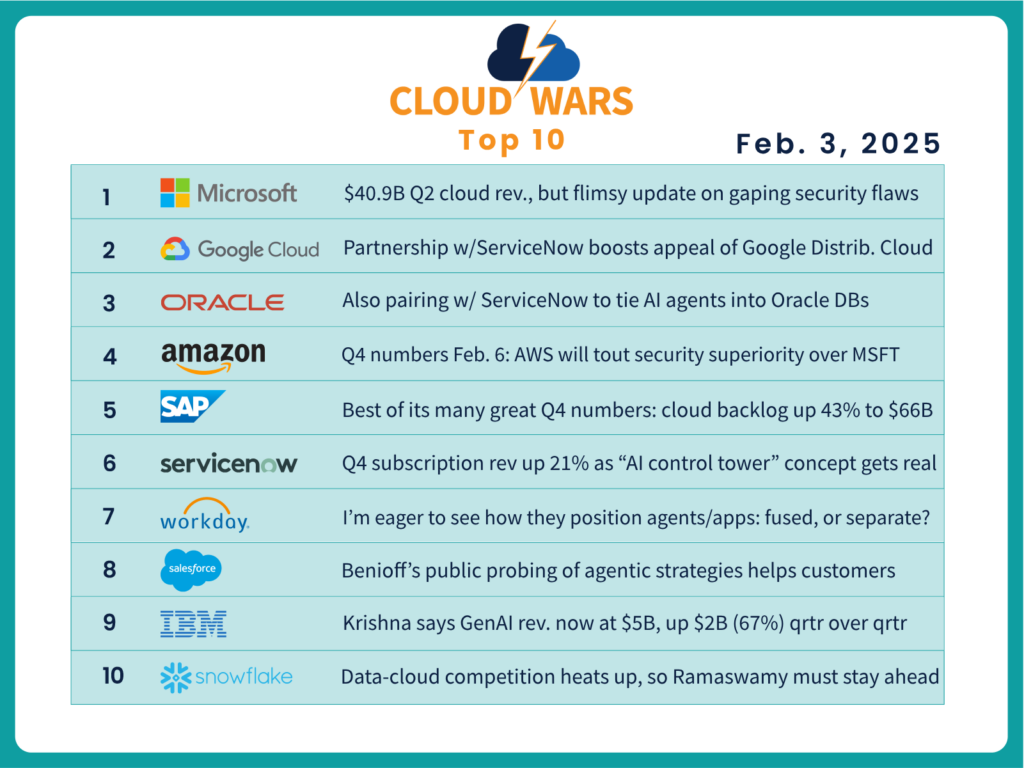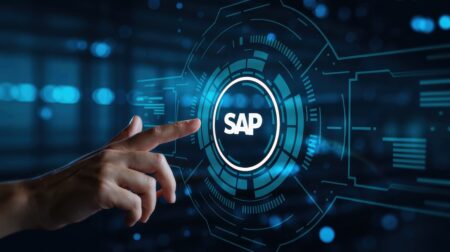
The CEOs of Oracle and Microsoft last week fully embraced the DeepSeek phenomenon despite the possibility, however remote, that it could seriously threaten the gargantuan-scale infrastructure approach to which both companies, along with Google Cloud and AWS, are massively committed.
I’m purposefully referring to this most-recent EMP moment in the techworld as the “DeepSeek phenomenon” rather than focusing on DeepSeek as a company because, while I’m not sure the company itself will be on anyone’s radar 12 months from now, the repercussions of its release of a model built on a wildly scaled-down approach will trigger waves of new thinking across the Cloud Wars Top 10 companies.
We all saw the initial indications of this ultra-shiny new object last week in the stock market, when DeepSeek’s debut torpedoed hundreds of billions of value from the market caps of entrenched cloud and AI superstars including NVIDIA and Microsoft. This Reuters headline was typical: “DeepSeek sparks AI stock selloff; Nvidia posts record market-cap loss.“
But as cooler heads prevailed and rational analysis overtook hyped-up hysteria, we began to see that the DeepSeek phenomenon is two things: simply another new model among what will soon be millions of new models available for everything from broad use to purpose-built deployments; and a high-value wake-up call to the tech industry that while the current approach of spending many tens of billions of dollars each year on cloud and AI infrastructure — in Microsoft’s case, $80 billion — the history of the tech business shows that at some point, new and better ideas always —always — come along to topple what was once believed the ultimate in innovation.
That sentiment was fully reflected by Oracle CEO Safra Catz during her keynote presentation at an Oracle CloudWorld event in Texas last week.
“We’re all seeing this DeepSeek situation and some people are saying, ‘Oh, that’s bad!’ But I’m saying, ‘Fantastic! Competition increasing in large-language models?? Come on in!’,” Catz says at about the 15:00-minute mark on this YouTube video.
“It can’t be more thrilling because what it means is that potentially — and who knows what the real story is with DeepSeek, but in a way it doesn’t matter! Because it just turns the competition even faster, even harder, and what it means is that AI is accessible to our customers at lower prices potentially,” Catz said.
“And for us, AI is fun, it’s very cool — a couple of years ago, the baby talked and we’re all asking it things,” she said about the ChatGPT phenomenon that kicked off 27 months ago.
“But really where it’s important for us is how does it help us run our business?”
Also last week, Microsoft CEO Satya Nadella used his company’s fiscal-Q2 earnings call to note that DeepSeek R1 is now available in Microsoft’s GitHub. Later in the call, he described his view of the relative significance of DeepSeek, stating that after initial gains from Moore’s Law with compute infrastructure and also with what he called “AI scaling laws,” big advances in software optimizations are starting to kick in.
“I think DeepSeek has some real innovations,” Nadella said, adding that Microsoft continues to work “super hard on all the software optimizations — not just the software optimizations that come because of what DeepSeek has done, but all the work we have done to, for example, reduce the prices of GPT models over the years in partnership with OpenAI.”
Ultimately, Nadella said, the value of all of that work manifests itself for customers: “The big beneficiaries of any software cycle like that is the customer.”
Indeed it is — and that’s the founding view we continue to embrace deeply here at Cloud Wars.

–








